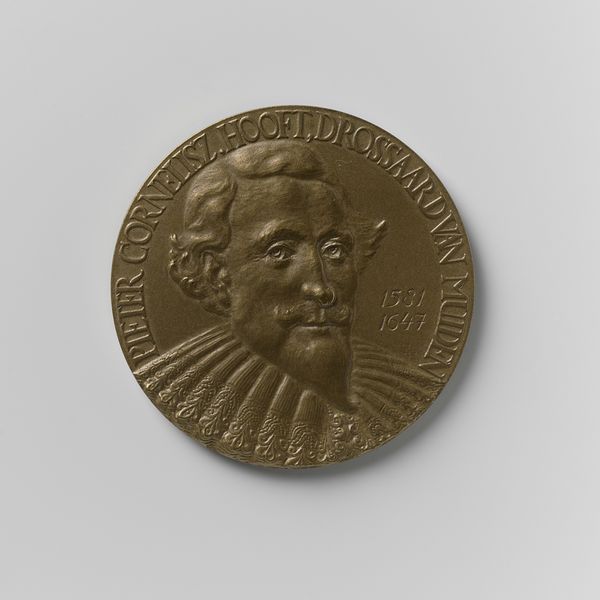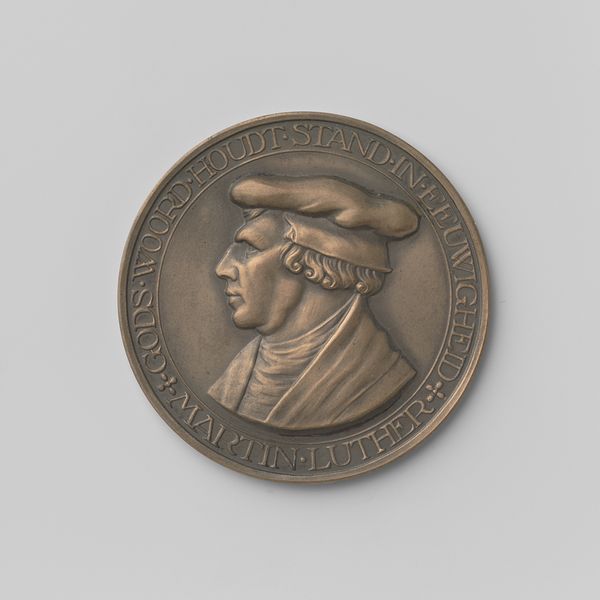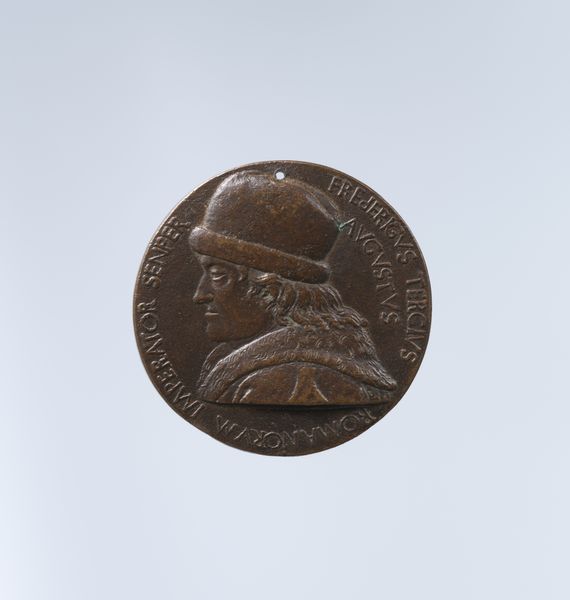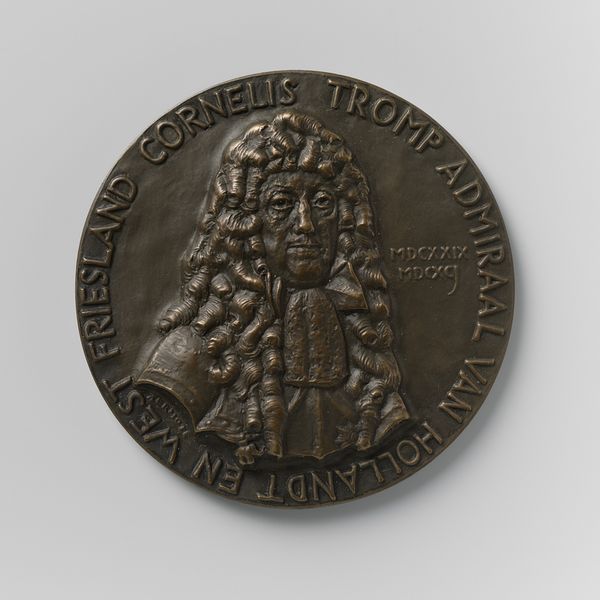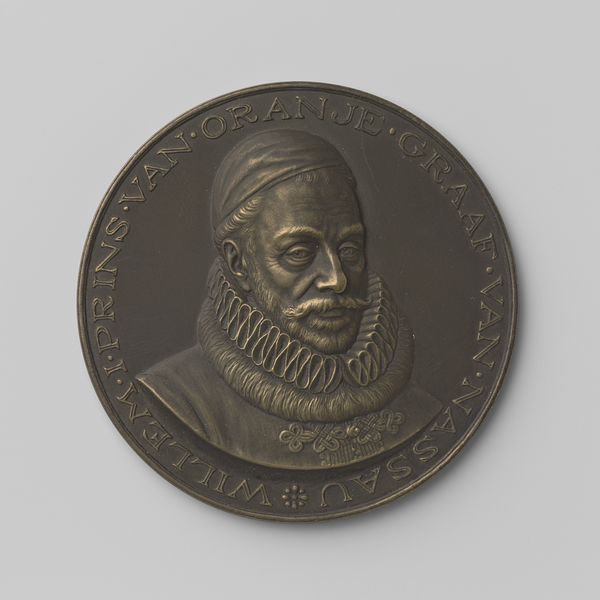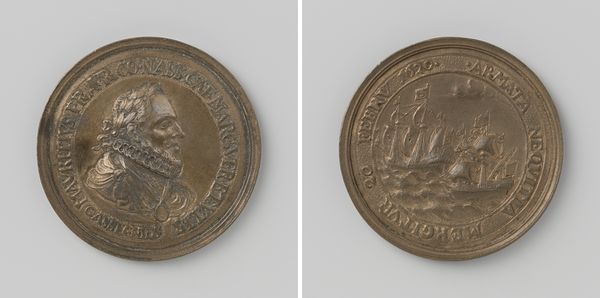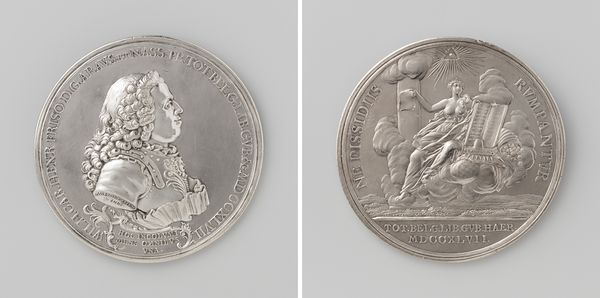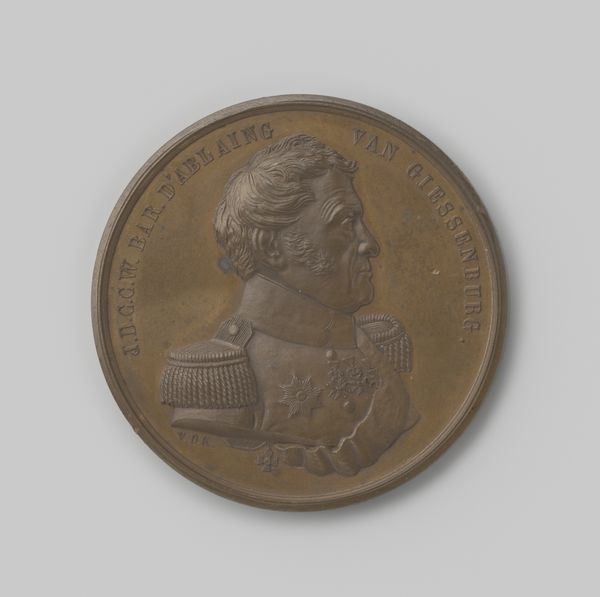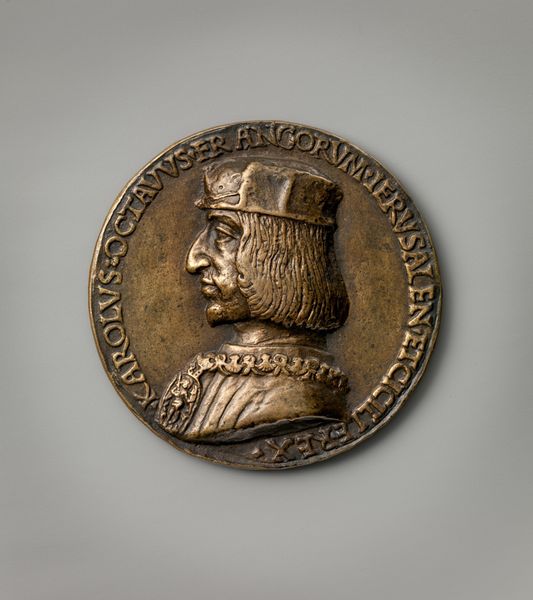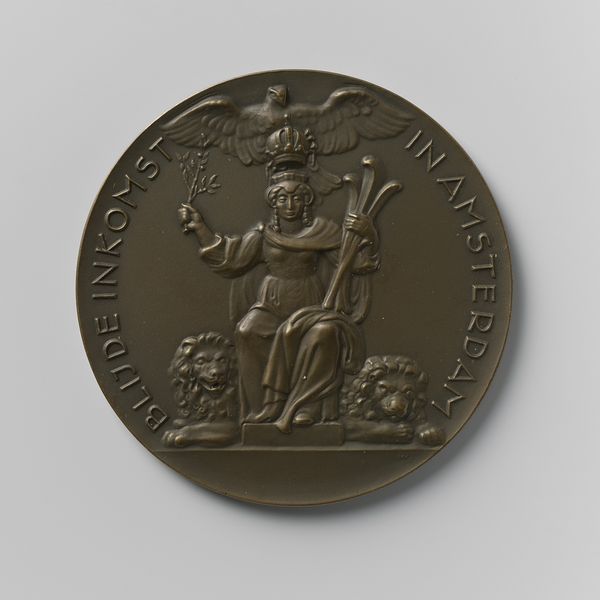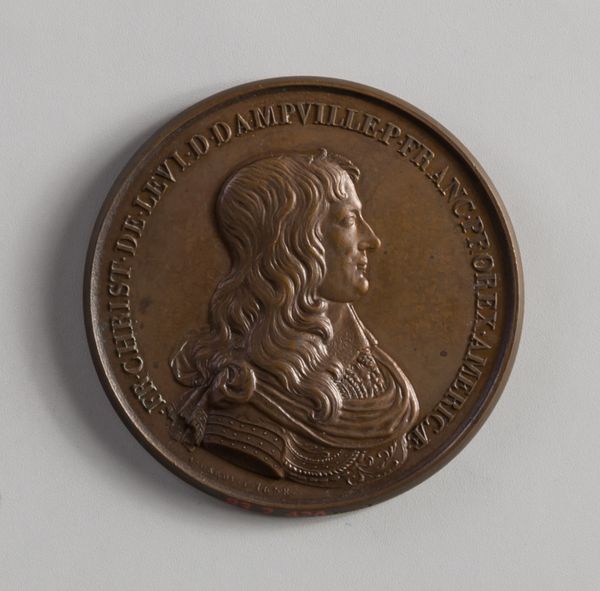
metal, bronze, sculpture
#
portrait
#
dutch-golden-age
#
metal
#
sculpture
#
bronze
#
sculpture
#
statue
Dimensions: diameter 6.9 cm, weight 128.13 gr
Copyright: Rijks Museum: Open Domain
Curator: This compelling bronze sculpture is titled "Cornelis Tromp 1938 met randinscriptie 1941" and the artist is Jacob Jan van Goor. Editor: It’s striking. The patina is beautiful and seems to highlight the meticulous detail in the armor and ruff. It feels weighty, both literally and figuratively. Curator: Absolutely. The depiction of Cornelis Tromp, a celebrated Dutch naval officer, certainly speaks to the nation's maritime power during the Golden Age. But note the "randinscriptie" of 1941; these types of images had an afterlife beyond the subject, in this case made during the Second World War, these artworks remind a population what it means to be Dutch, what it means to resist an occupying power. It's the intersection of art and national identity that is crucial. Editor: I’m interested in the choice of bronze. It's a relatively common material for sculpture, but was there something unique at play during World War II? Access to bronze might have been restricted due to wartime needs; did the choice to cast a portrait in this material carry more weight, symbolically, under those specific conditions? Was it even possible to procure the metal? Curator: Those material concerns certainly add another layer to the discussion. These works weren't simple self-portraits. Tromp's image reinforced the image of a strong Netherlands and it can have been re-appropriated by cultural heritage organisations with specific political aims in the context of an increasingly globalized world. Editor: Thinking about production—who made this? Where was it cast? I wonder about the artisan's labor involved in creating the die, how their skills intersected with Van Goor's artistic vision. It’s important to consider how class, labor, and power intersect in the very act of creation. Curator: These are vital considerations. We should look deeper into Van Goor’s involvement with cultural institutions and how these connections may have shaped both the production and reception of his work during such a fraught historical period. The role of this bronze and of art generally needs close study. Editor: It makes me consider that this medal isn’t just an isolated artwork, it’s part of a broader material culture shaped by power, conflict, and a population seeking to re-establish its past glory. Curator: Precisely. It serves as a potent reminder that the value and meanings we assign to objects shift with the tides of history. Editor: Agreed. Exploring both the social life of an artwork and the materials themselves creates a more layered interpretation of Dutch culture at a time of incredible stress and global transformation.
Comments
No comments
Be the first to comment and join the conversation on the ultimate creative platform.
